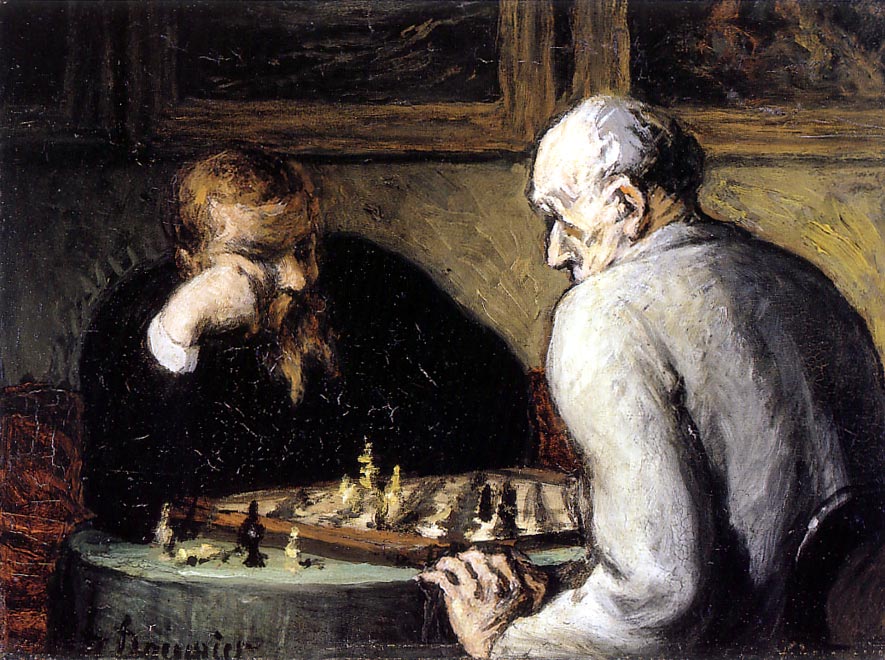
In his early thinking about a chess-playing computer, information theorist Claude Shannon pointed out that a precise evaluation of a chessboard position would take one of only three possible values, because an infinitely smart player would never make a mistake and could reliably convert even a tiny advantage into a win. Chess to him would be as transparent as tic-tac-toe is to us.
A game between two such mental giants, Mr. A and Mr. B, would proceed as follows. They sit down at the chessboard, draw for colours, and then survey the pieces for a moment. Then either
(1) Mr. A says, ‘I resign’ or
(2) Mr. B says, ‘I resign’ or
(3) Mr. A says, ‘I offer a draw,’ and Mr. B replies, ‘I accept.’
(Claude E. Shannon, “XXII. Programming a Computer for Playing Chess,” The London, Edinburgh, and Dublin Philosophical Magazine and Journal of Science 41:314 [1950], 256-275.)
